
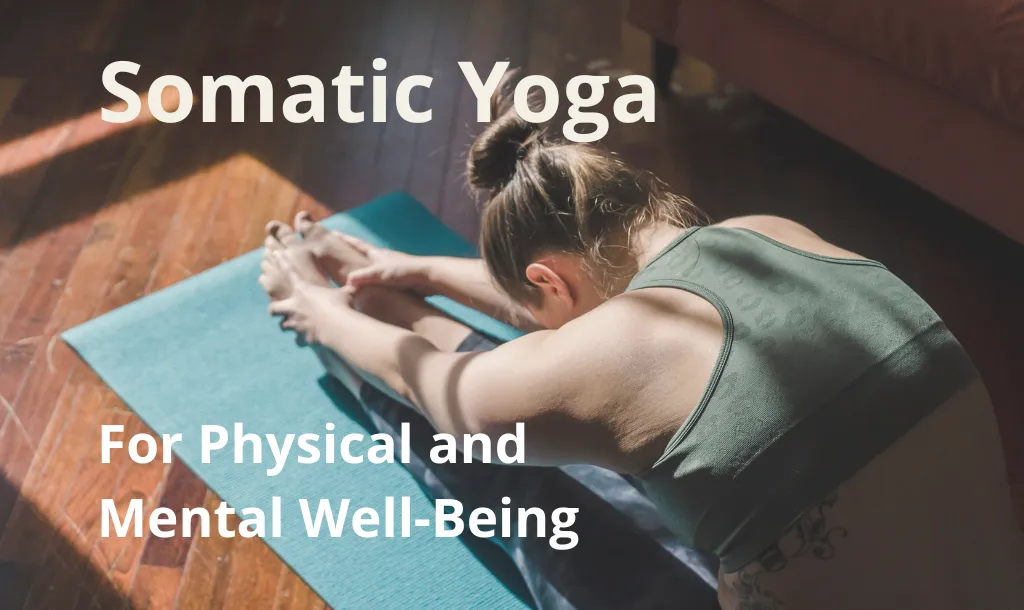
Somatic yoga is becoming increasingly popular lately, drawing attention and piquing curiosity. But what exactly is somatic yoga, and who needs it? The answer is: Everyone!
As we’re constantly juggling various tasks and responsibilities, we often lose touch with our bodies and how they truly feel. The physical and mental stressors of day-to-day life can leave us feeling disconnected and out of sync with ourselves.
On those days, somatic yoga can help you reconnect with your body through gentle and mindful movement.
Somatic yoga is a gentle and therapeutic practice that emphasizes the mind-body connection. It encourages slowing down, moving mindfully, and tuning into your body's needs. By focusing on sensations and areas of tension or discomfort, somatic yoga helps release stress, build awareness, and restore physical and emotional balance.
Somatic yoga is not about perfecting poses but understanding how your body feels in each movement by melting into the pose. It encourages you to explore subtle sensations in your body while you’re in the pose, fostering a deeper sense of connection with your body. This promotes harmony and greater awareness of your physical and emotional well-being.
This makes somatic yoga a great fit for anyone looking to manage stress, improve posture, or alleviate chronic pain. It’s especially beneficial if you’re experiencing tension, recovering from injury, or seeking a more mindful and restorative approach to movement.
Somatic yoga poses are gentle, slow, and mindful, helping you become aware of the different sensations of your body. These poses don’t just stretch your muscles; they also enable your brain to release tension, fostering a deeper connection between your mind and body.
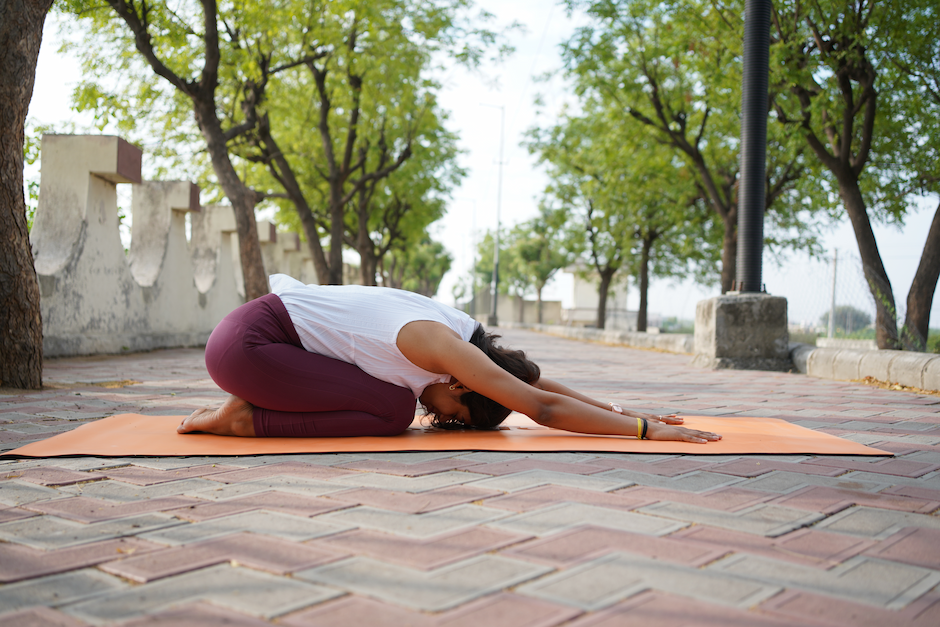
The Child’s Pose allows you to focus on your breath and the gentle stretching sensations in your back. This pose is an invitation to relax and understand your body’s need for rest.
Steps:
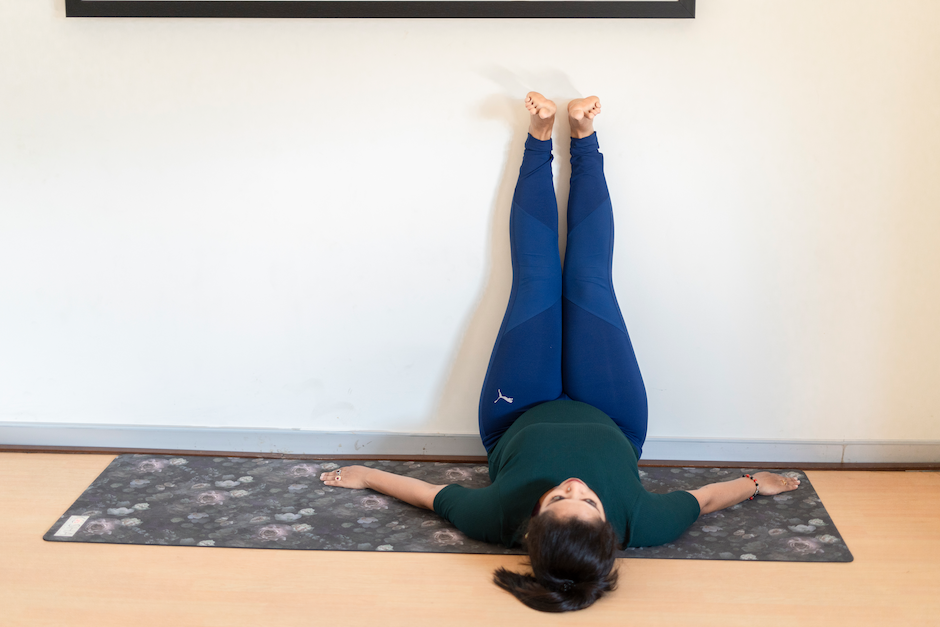
This is a restorative pose that promotes relaxation and helps calm the mind. Its slow, mindful nature invites you to explore subtle sensations and observe how your body feels in stillness.
Steps:
This movement reconnects you with the natural flow of your body, encouraging mindful exploration of the way your body moves in all directions.
Steps:
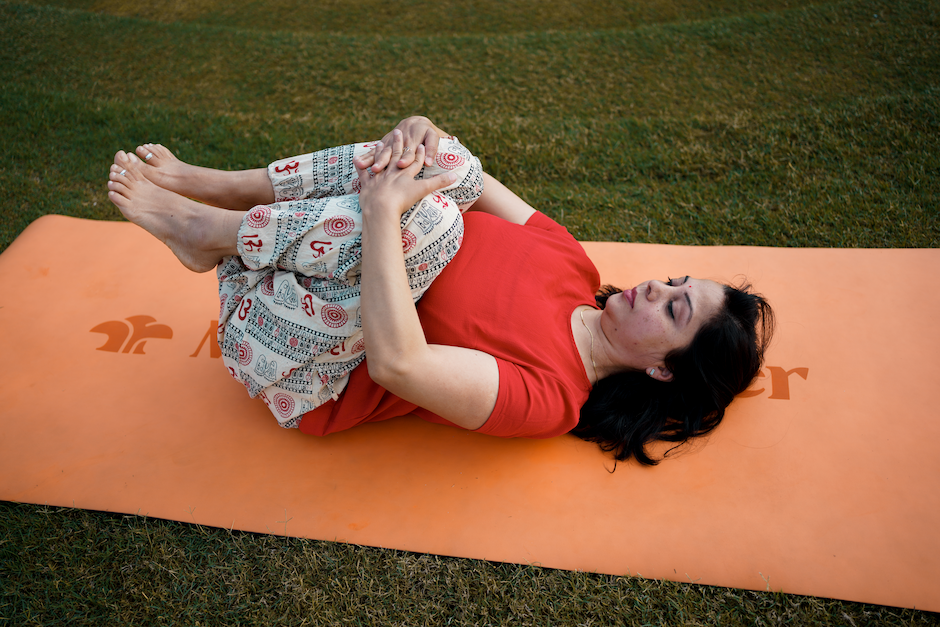
This pose fosters relaxation and a sense of ease. It invites you to notice the sensations in your abdomen and hips as you gently hug your knees to the chest.
Steps:
Corpse Pose offers a space for complete relaxation and introspection. As you lie still, you can notice subtle shifts in your body, such as how your muscles soften or how your breath creates gentle movement.
Steps:
By practicing these poses regularly and mindfully tuning into your body's sensations, you can deepen your connection to yourself, enhance body awareness, and promote overall well-being.
Somatic yoga has several benefits, such as:
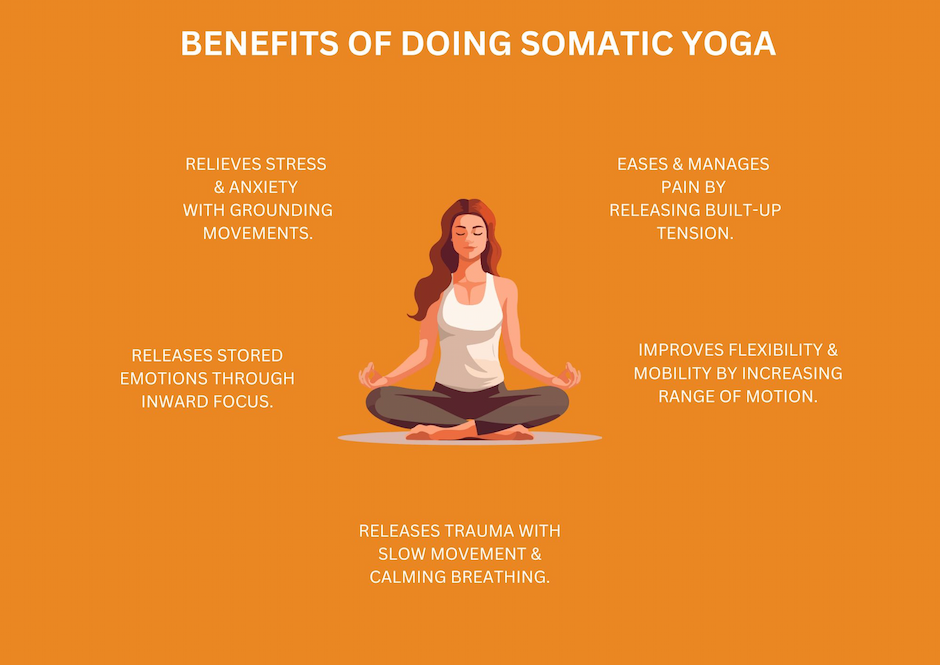
Somatic yoga helps you to slow down, tune into your body, and shift from "fight-or-flight" to "rest-and-digest." Gentle and grounding movements paired with breathwork encourage your nervous system to relax, reducing stress hormones like cortisol while fostering the release of calming chemicals such as endorphins. This helps identify where stress manifests physically—be it tight shoulders, shallow breathing, or a racing heart—and promotes relaxation and calm through mindful exploration.
Caught amidst daily life, we develop habits like slouching or clenching muscles that create unnecessary tension. This stored, built-up tension and tightness can lead to pain. Somatic yoga uses slow, mindful movements to gently release the tension, teaching your body ways to move more efficiently. For instance, if you habitually clench your jaw or hunch your shoulders when stressed, somatic yoga can help you notice and stop these habits, reducing pain and stiffness.
Tightness in the body isn’t just about stiff muscles—it’s also about how your brain might limit movement to "protect" an area it perceives as vulnerable, even if it’s safe to move. The slow and mindful movement in somatic yoga teaches your brain to these restrictions. Over time, this process helps improve your range of motion and posture, making everyday movements like bending or reaching feel more natural and comfortable.
Emotions like stress or anxiety often show up as physical tension—for example, tight shoulders or a stiff back. Somatic yoga helps you notice where these feelings are stored in your body and release them through gentle movement and inward focus. By reconnecting with your body in this way, you can process emotions you may have ignored, leaving you feeling lighter and more in tune with yourself.
Trauma often leaves the body in a “fight or flight” mode, creating tension or disconnection that feels hard to shake off. Somatic yoga uses slow movements and calming breathwork to help the nervous system feel safe again. Over time, gentle stretching combined with mindful breathing can help your body release built-up trauma, fostering a sense of safety and calm.
Somatic yoga has several benefits, but you can reap them fully under the guidance of a skilled and experienced coach. The live guidance of a MyYogaTeacher coach can help you explore the poses mindfully, making sure you’re constantly aware of your body’s sensations, movement patterns, and responses. Through real-time feedback and tailored practices, your coach can guide you in releasing tension, improving mobility, and reconnecting with your emotions.
Identifying where stress or trauma is stored in your body isn’t always easy, and that’s where personalized guidance in the comfort of your home can make all the difference. In this setting, it becomes easier to explore hidden emotions and work through them without the distractions or discomfort of a public environment. This safe, judgment-free space allows you to focus fully on your healing journey.
Experience the benefits of somatic yoga firsthand—book your free 1-on-1 session today!
A somatic workout is a gentle way to connect your mind and body through movement. It focuses on being aware of how your body feels and moves, helping to release tension and improve flexibility. Common techniques include somatic stretching, somatic yoga, breathwork, and body scanning. These practices help you move more naturally, ease pain, and feel more relaxed.
Yes! Somatic yoga is great for beginners as it emphasizes listening to your body and moving at your own pace. There’s no need for flexibility or prior experience; and with the help and guidance of a 1-on-1 coach, each movement can be tailored to your comfort level and made accessible. Its focus on mindful exploration over achieving perfect poses makes it welcoming for anyone new to yoga.
Somatic yoga can be a powerful tool for trauma release. Somatic yoga uses mindful movements, breathwork, and body awareness to help release stored emotions and promote nervous system regulation. Techniques like gentle stretches and vagus nerve activation create a safe space for the body to process emotions and heal. While it can be a supportive practice, working with a trusted coach can enhance its effectiveness in addressing trauma.
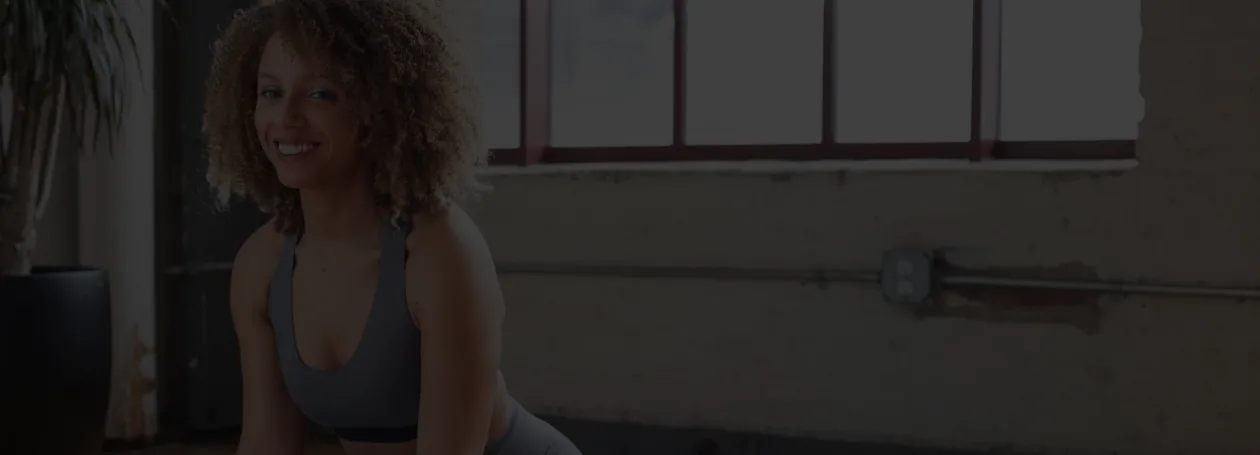
Receive personalized guidance tailored to your unique fitness goals, live with a dedicated coach—no credit card required.